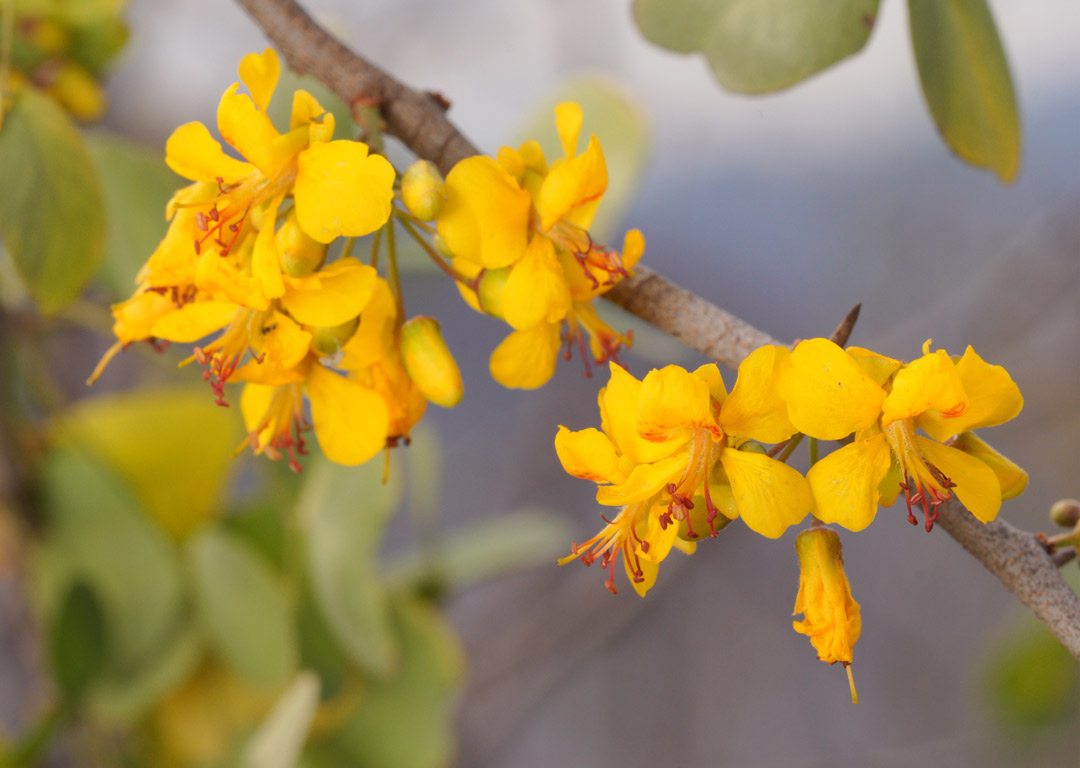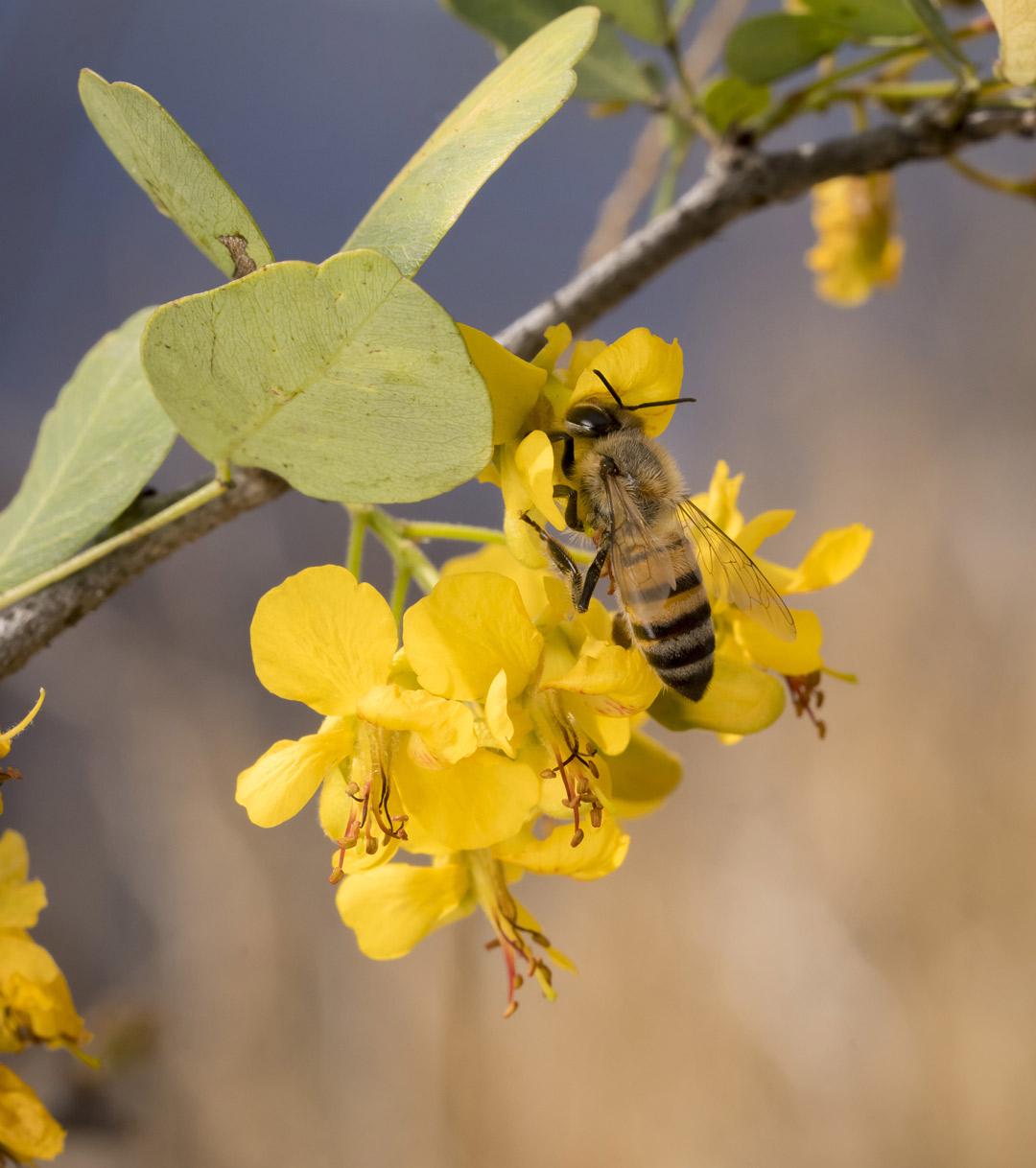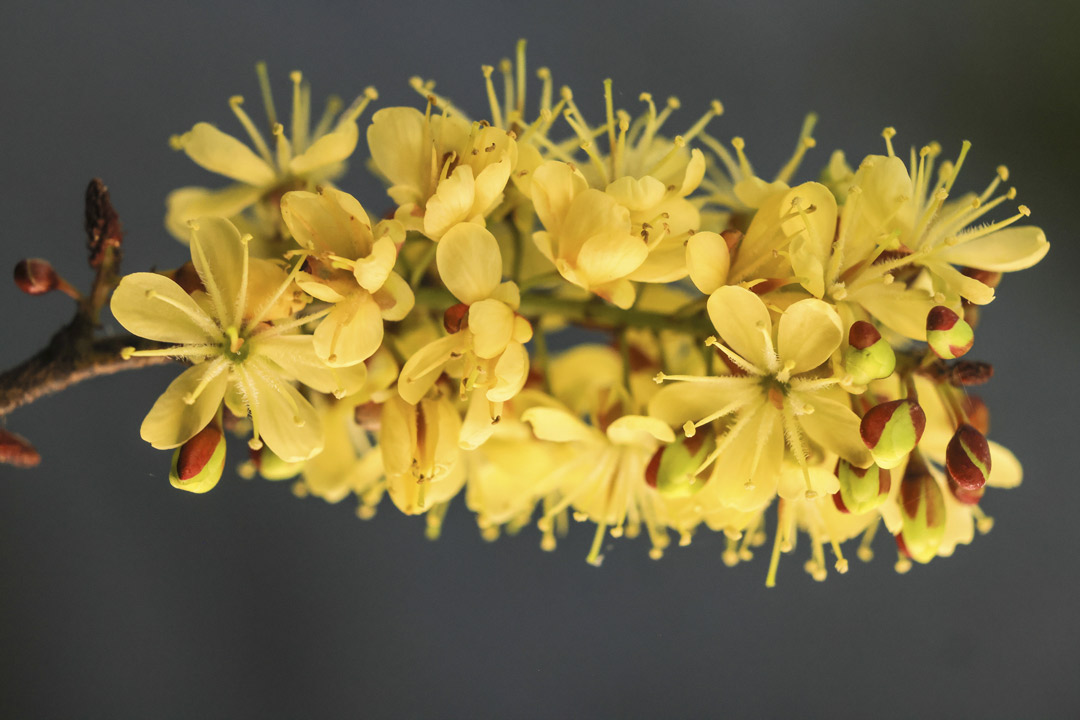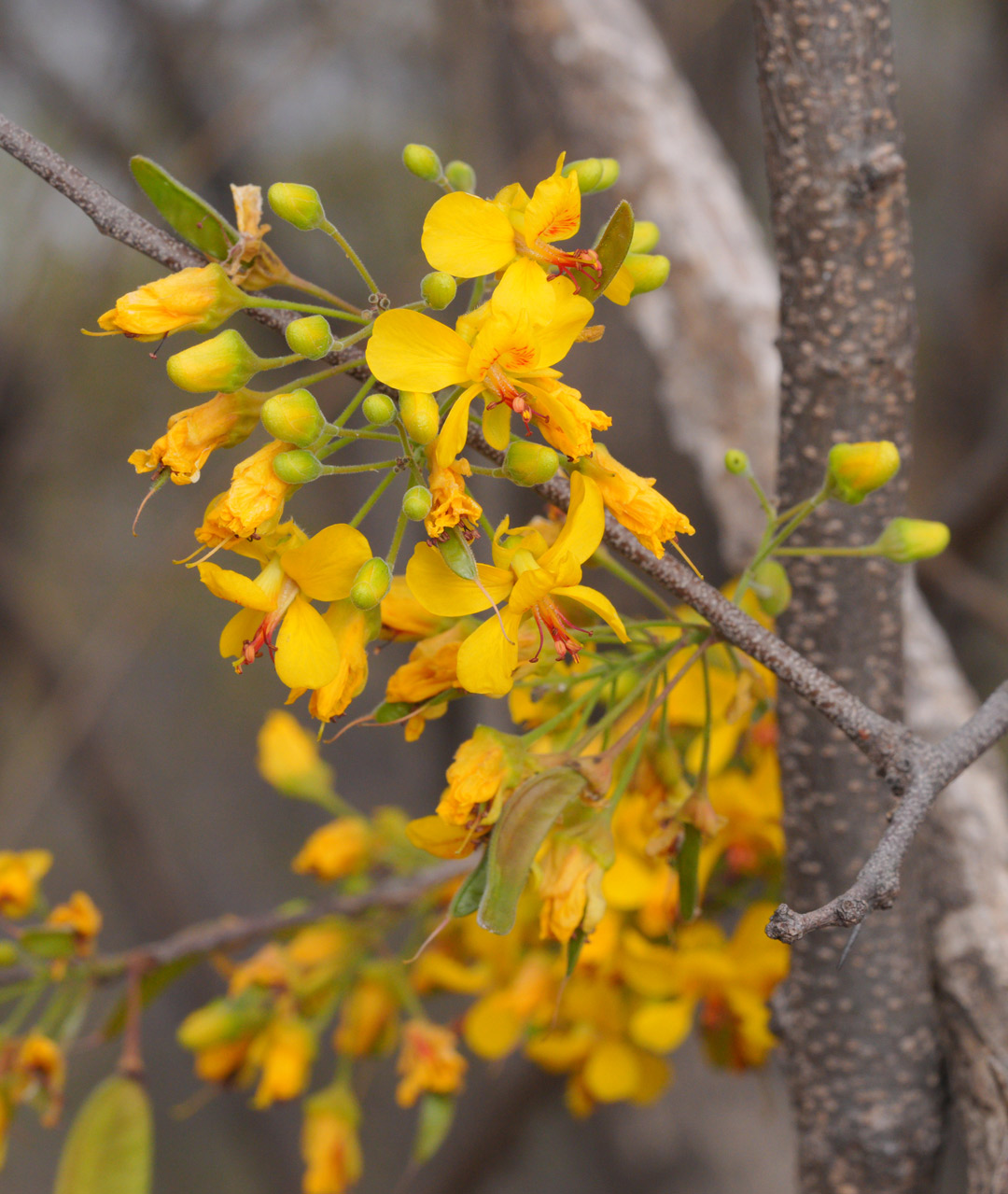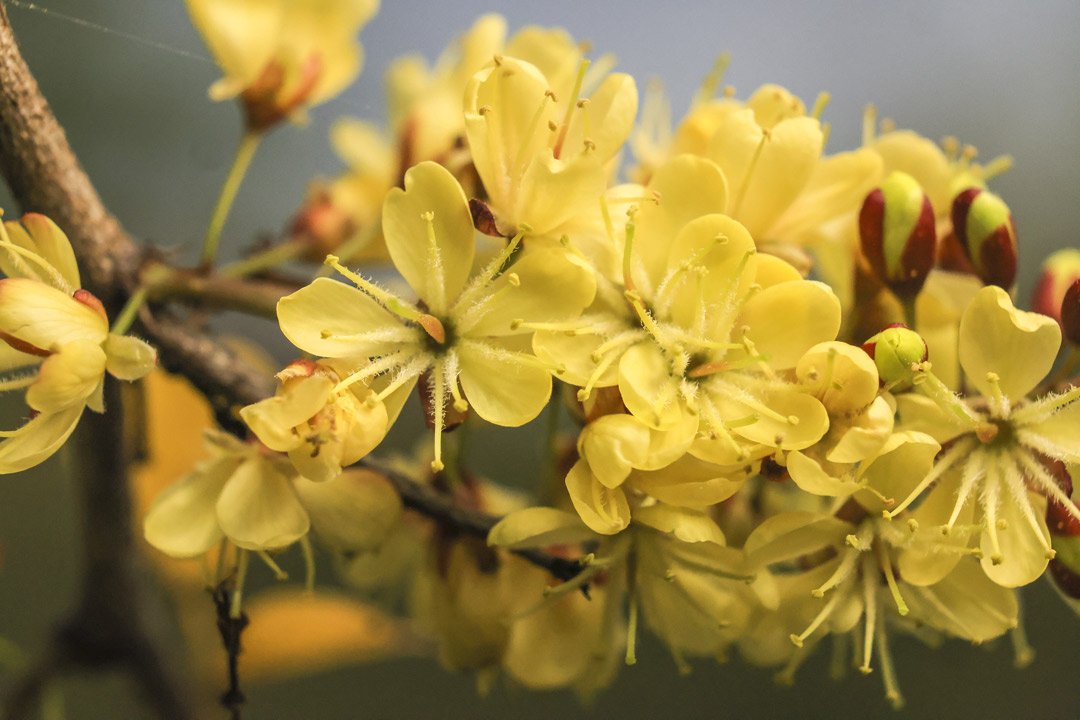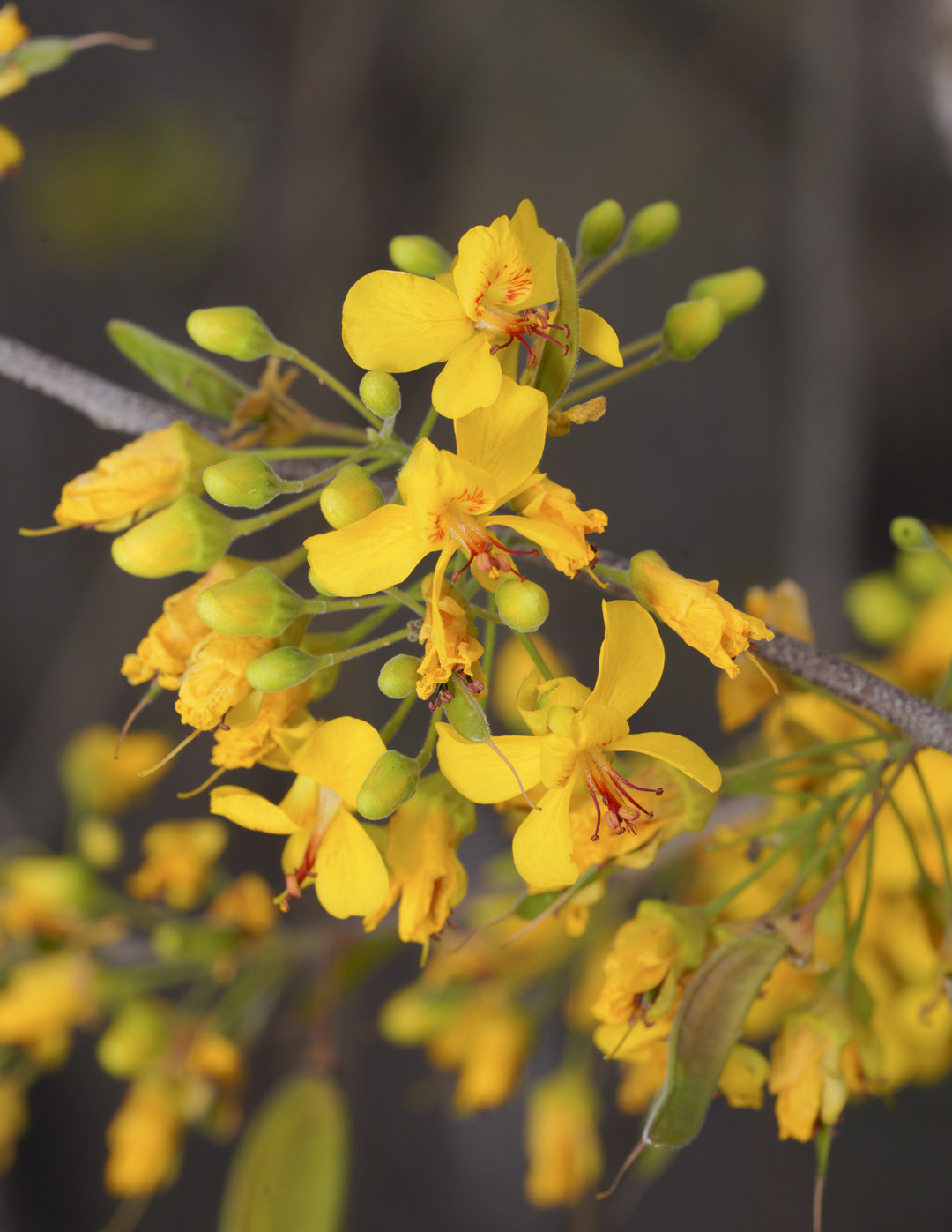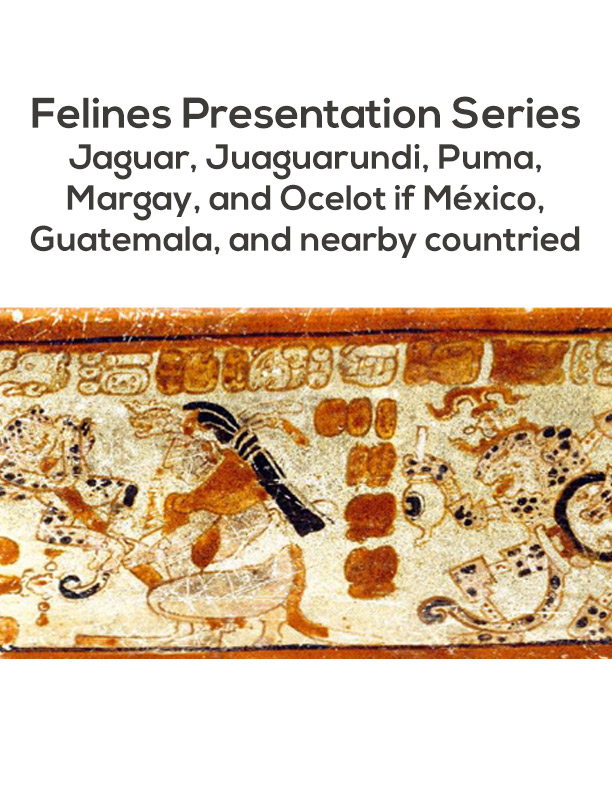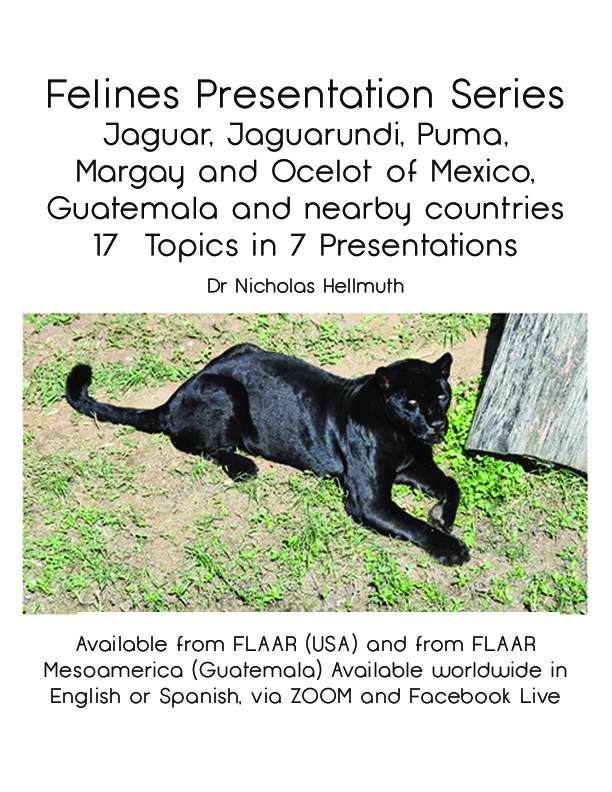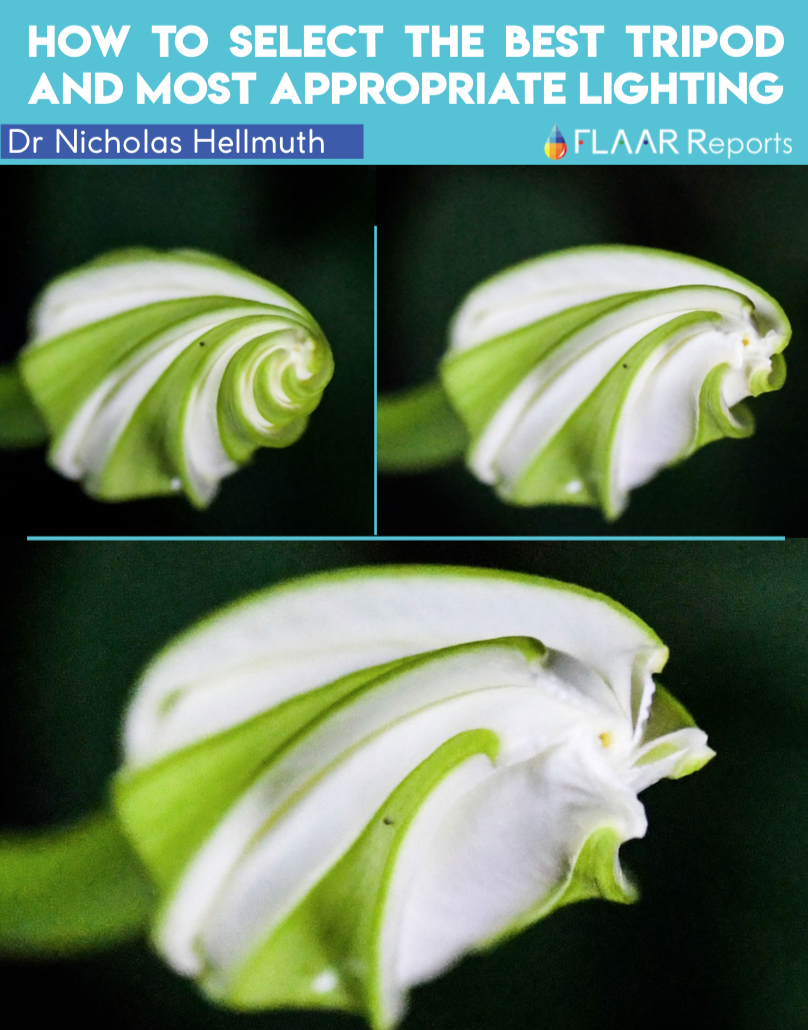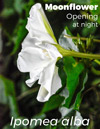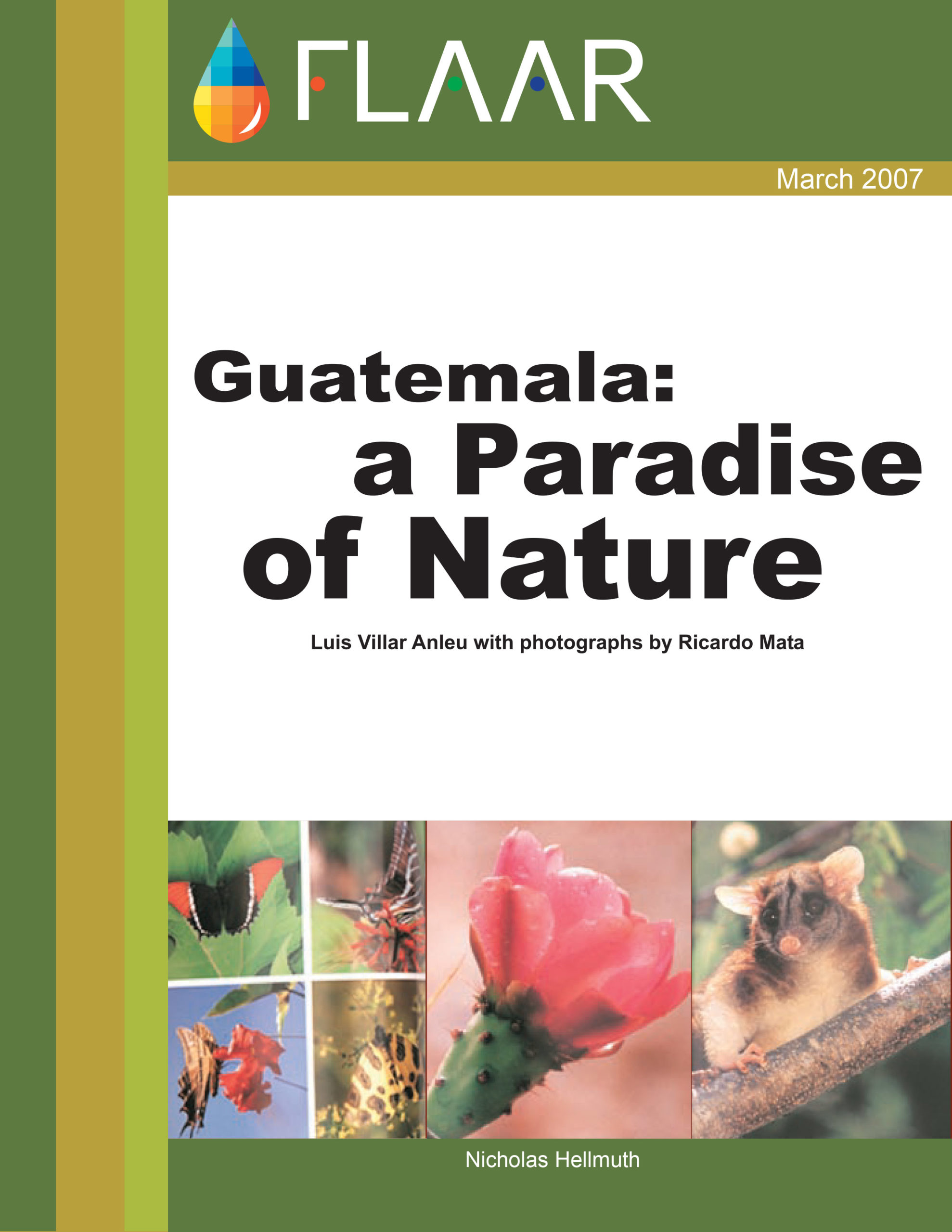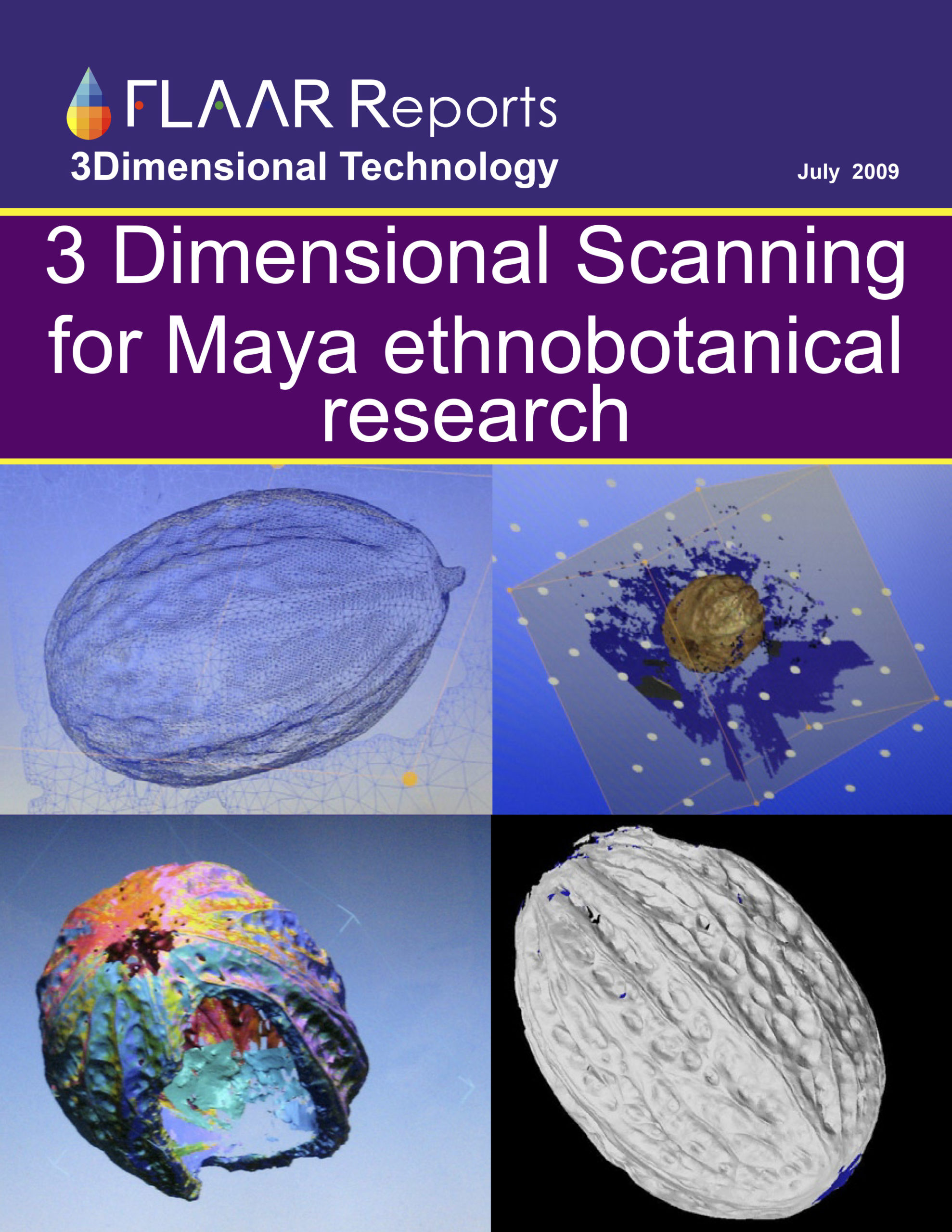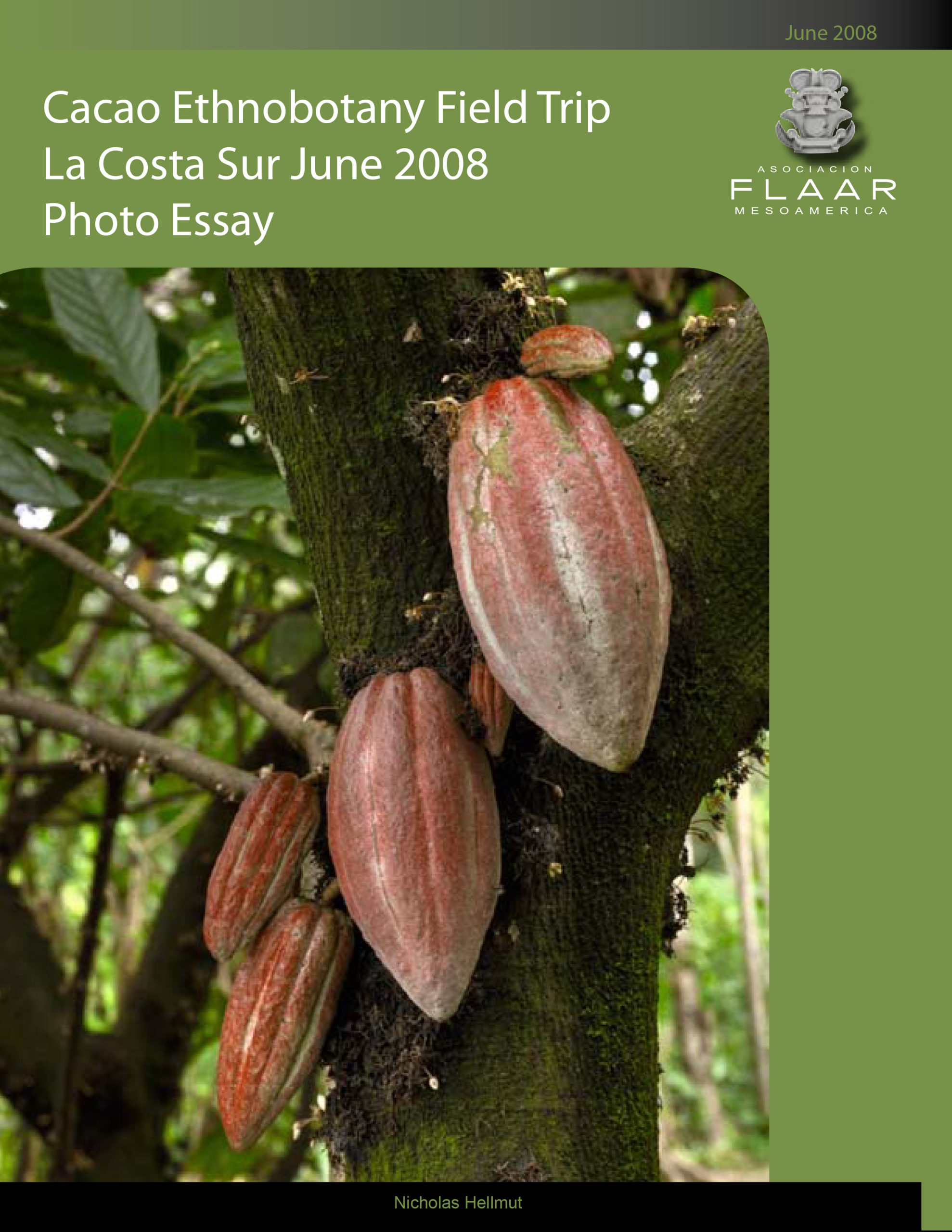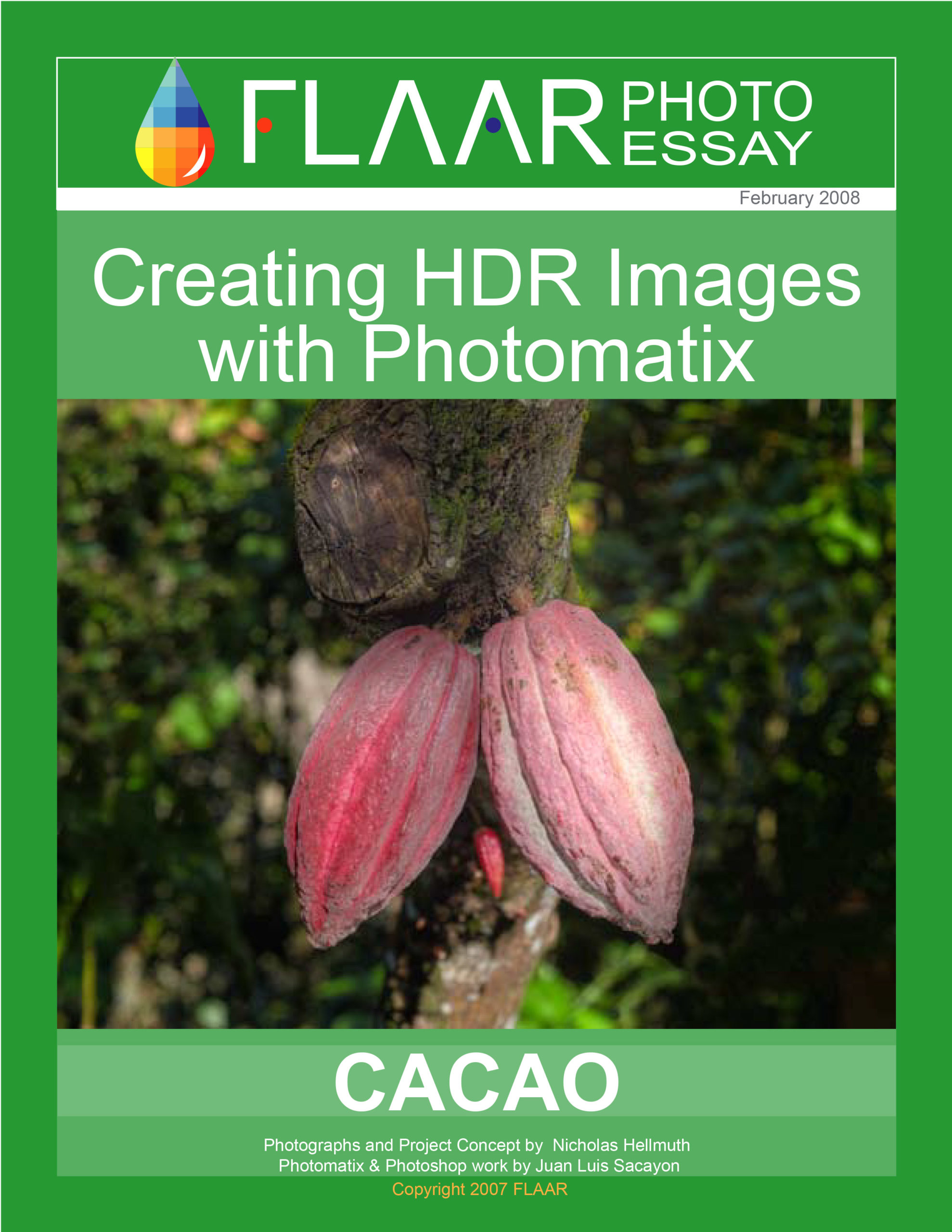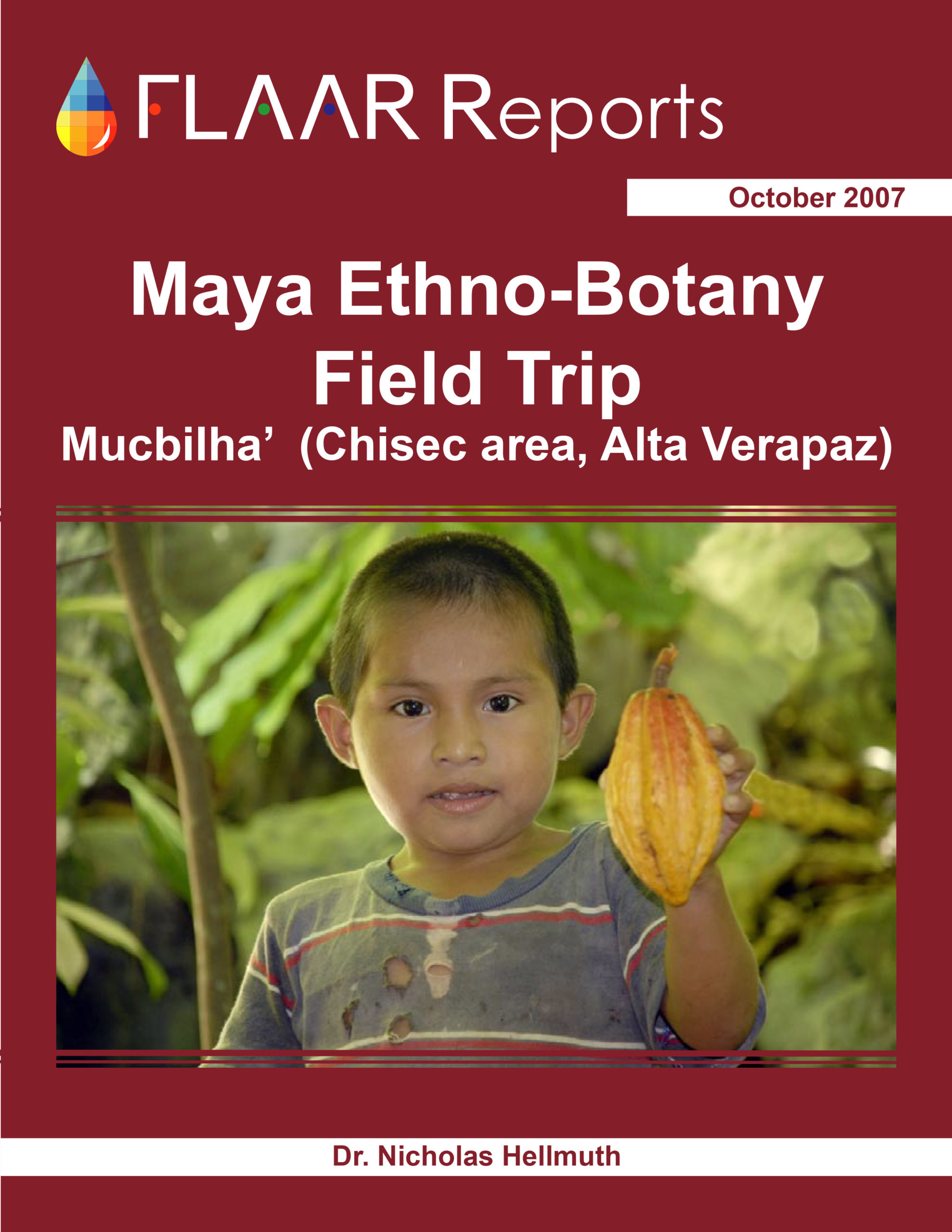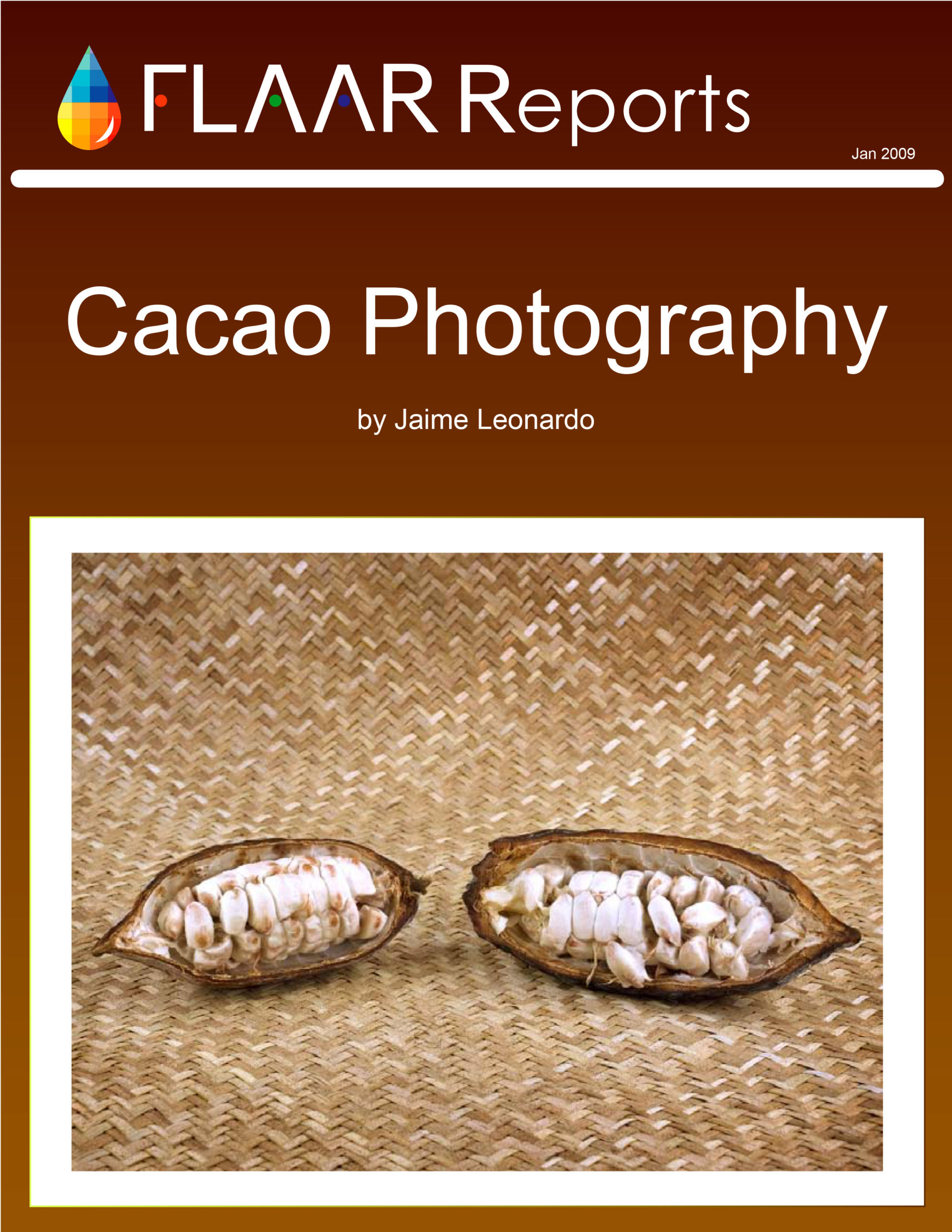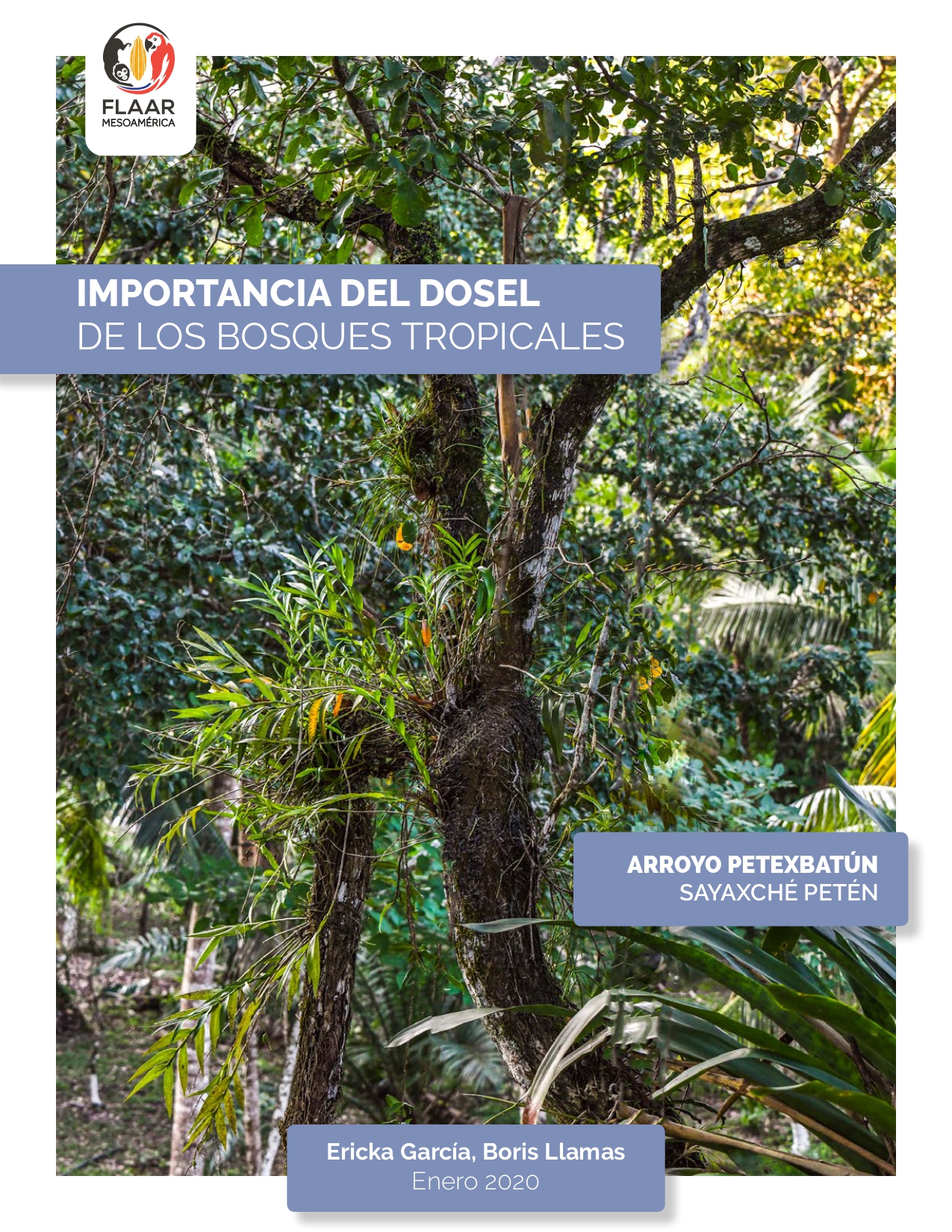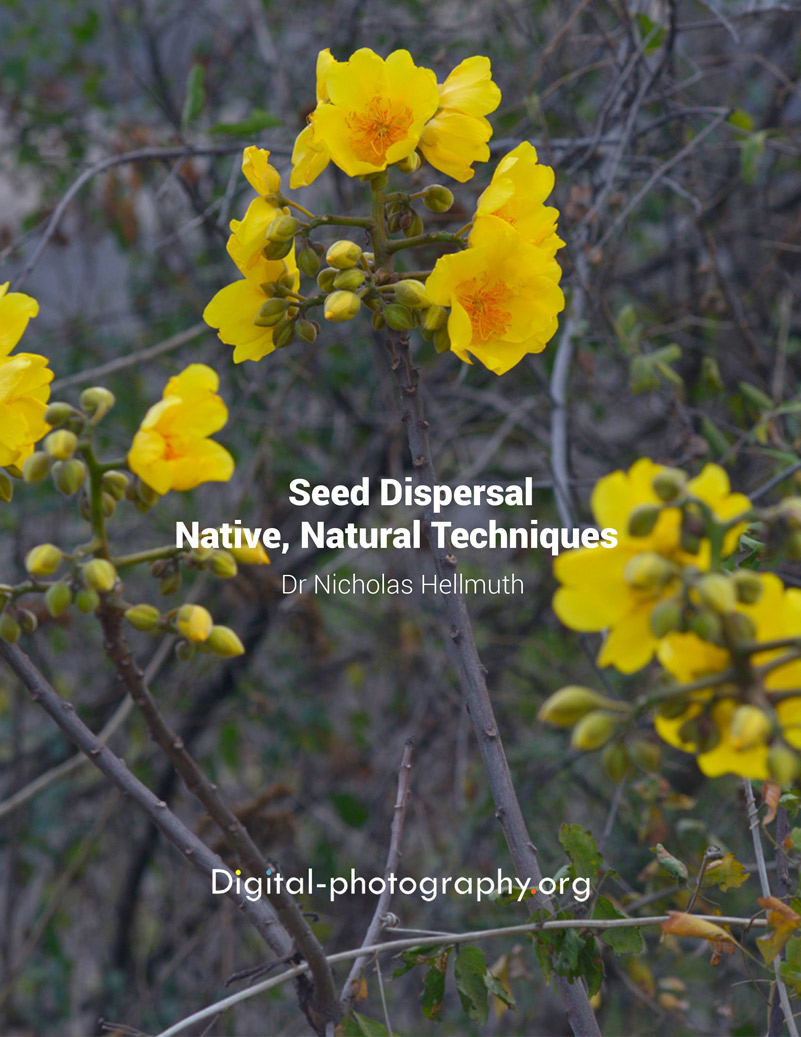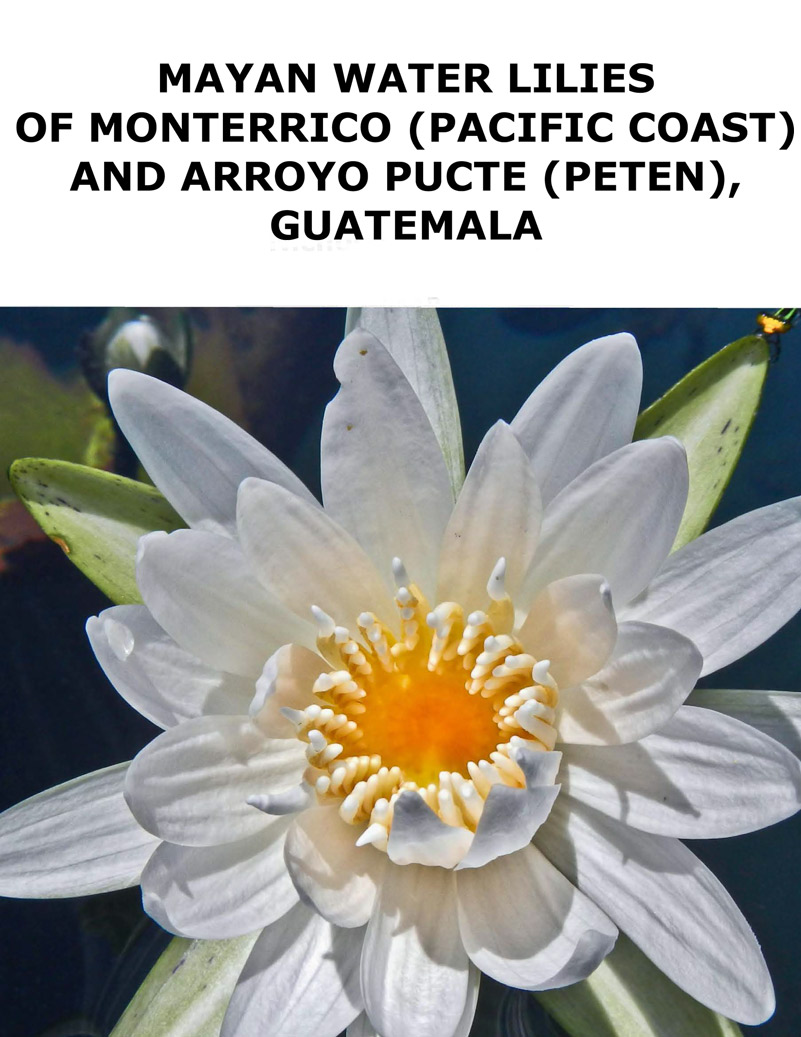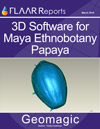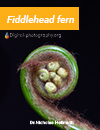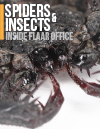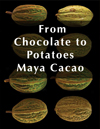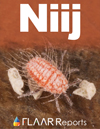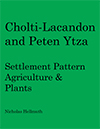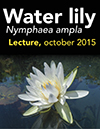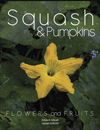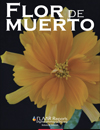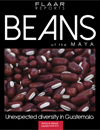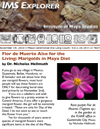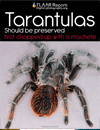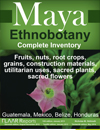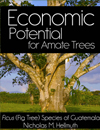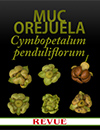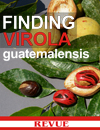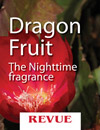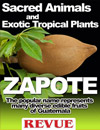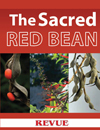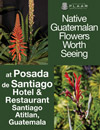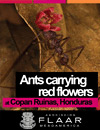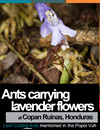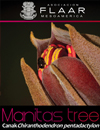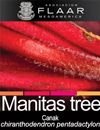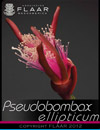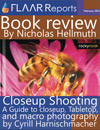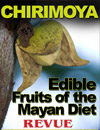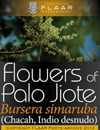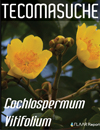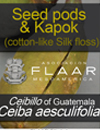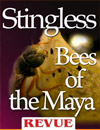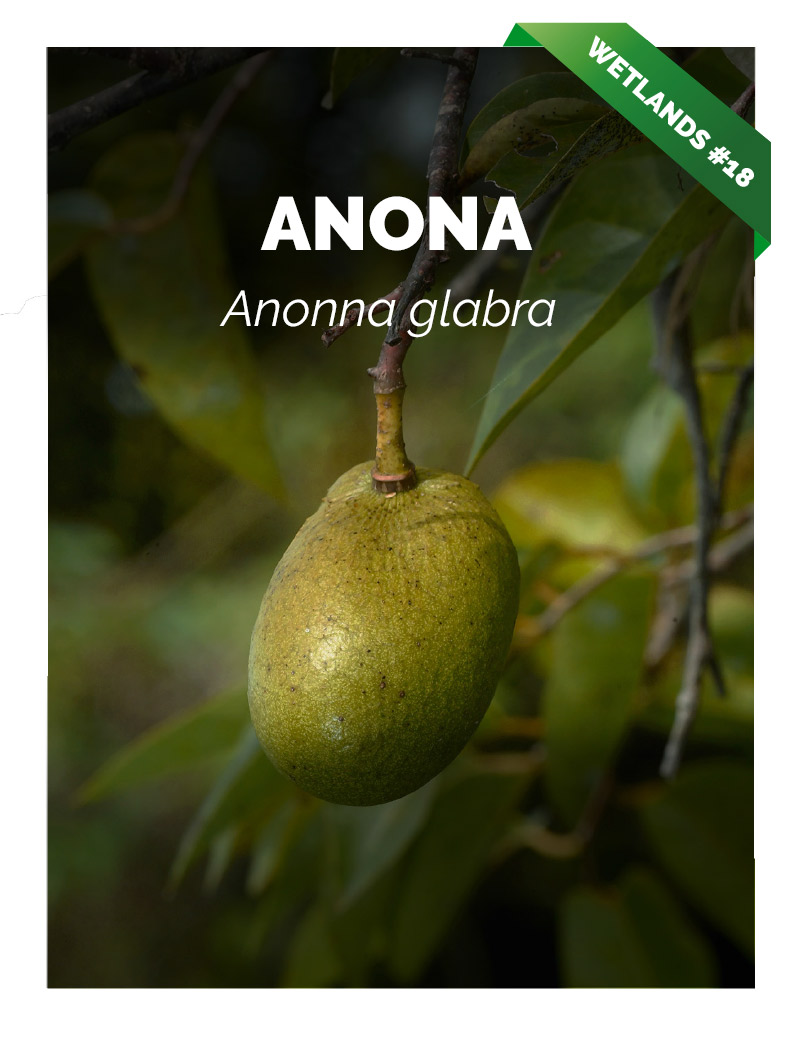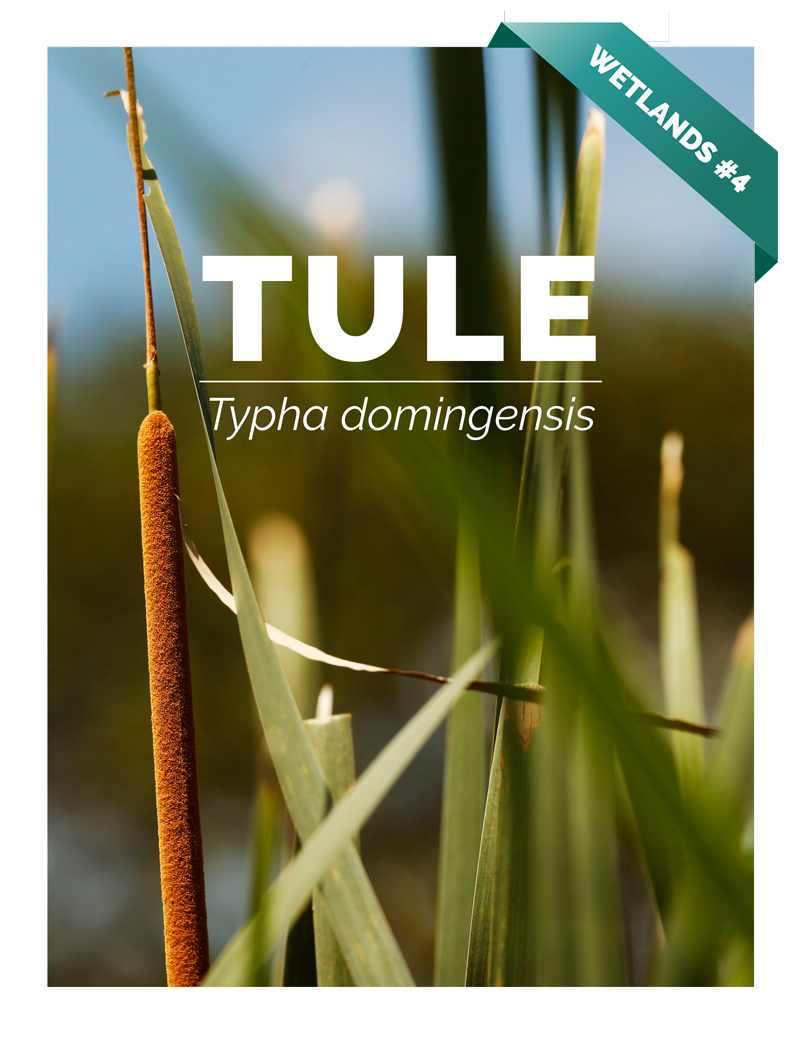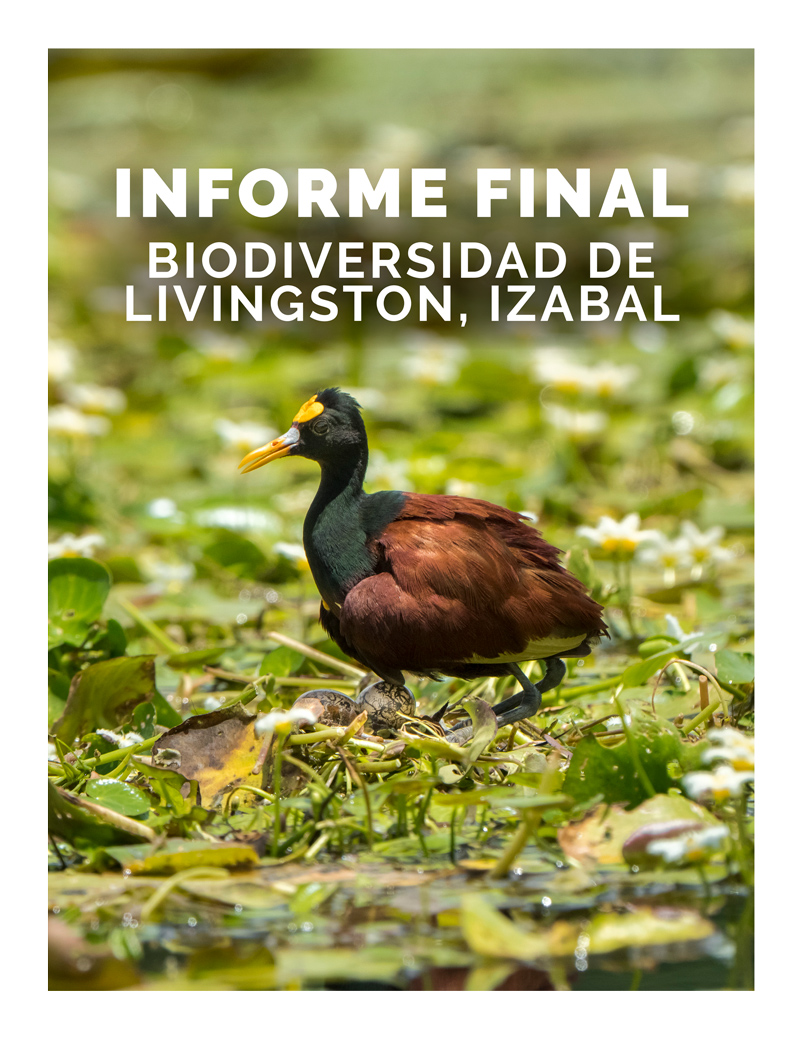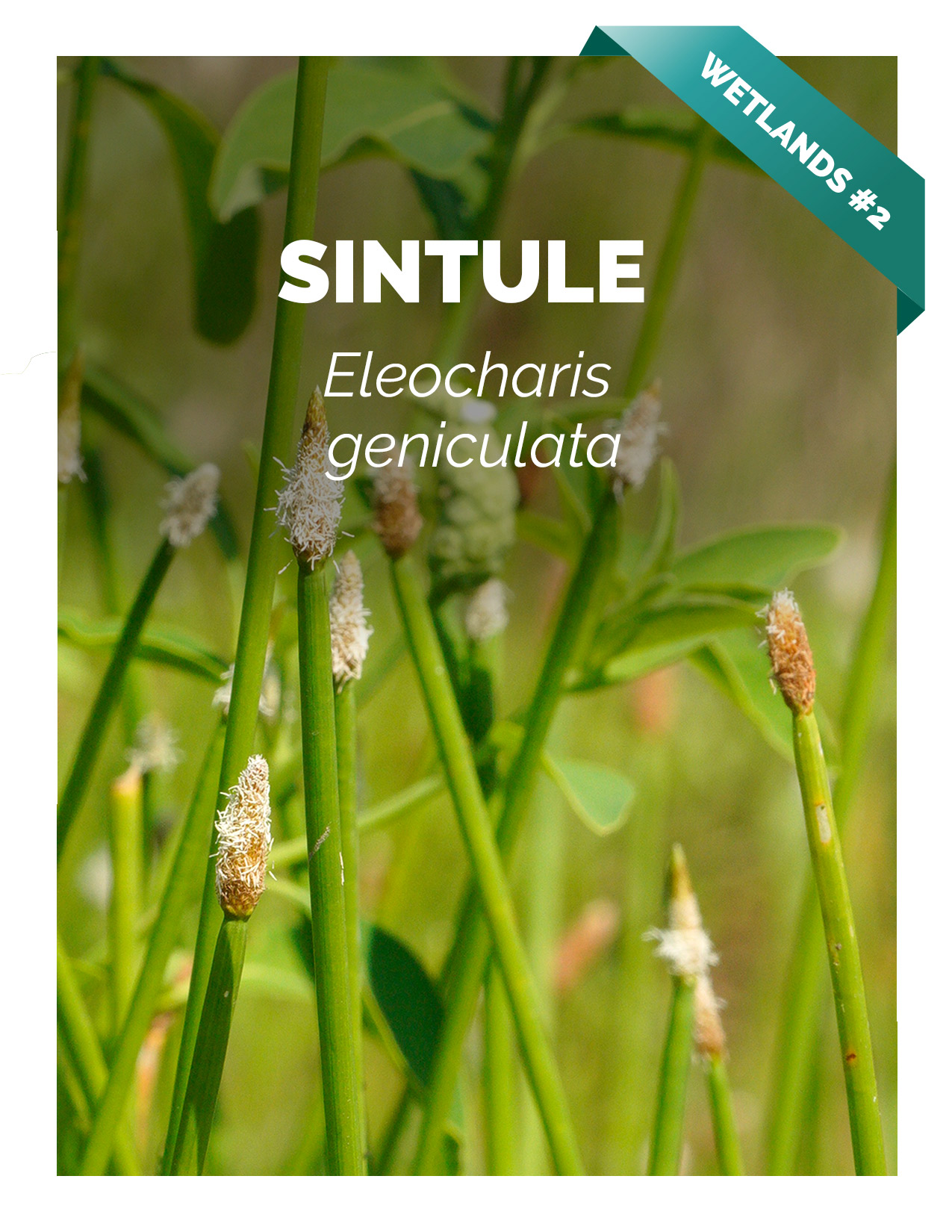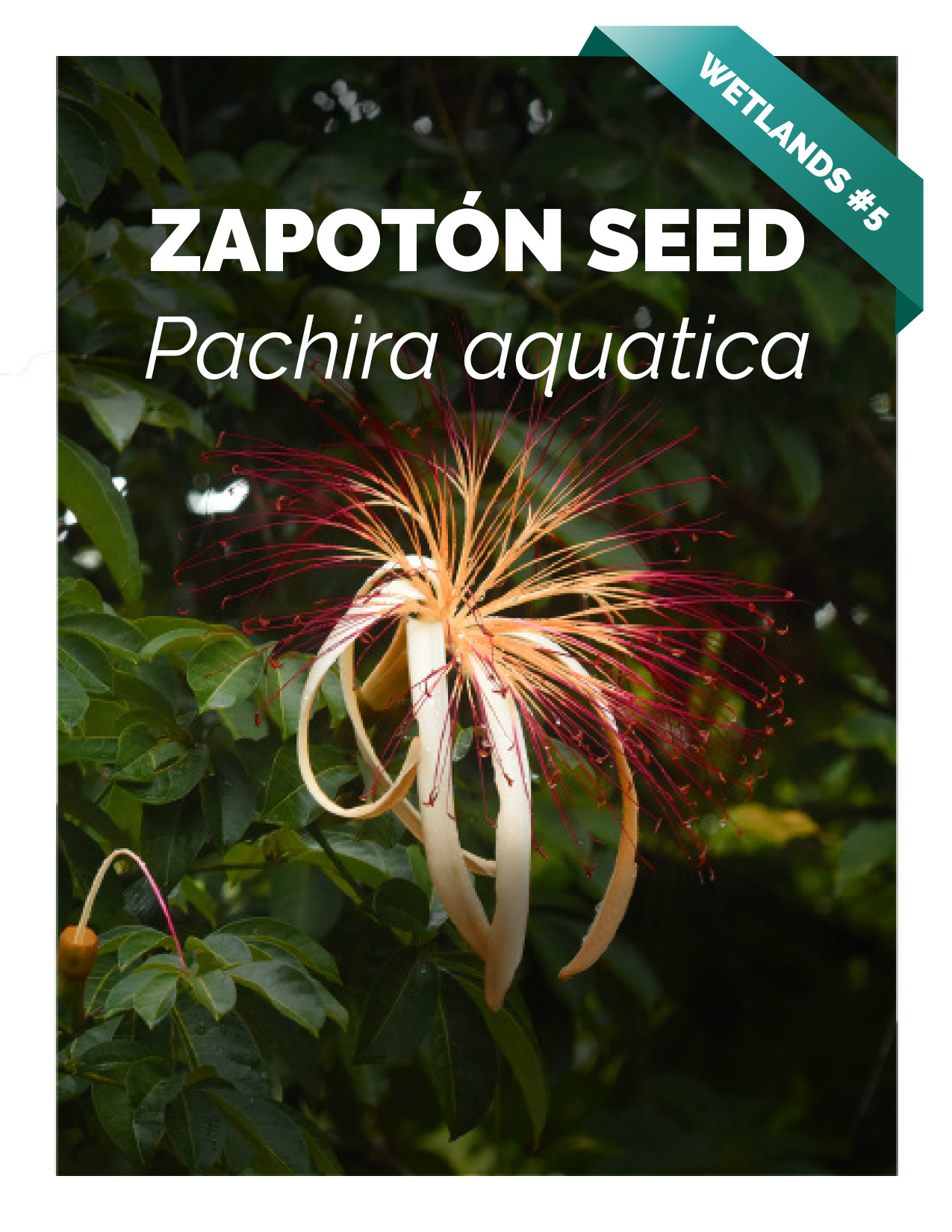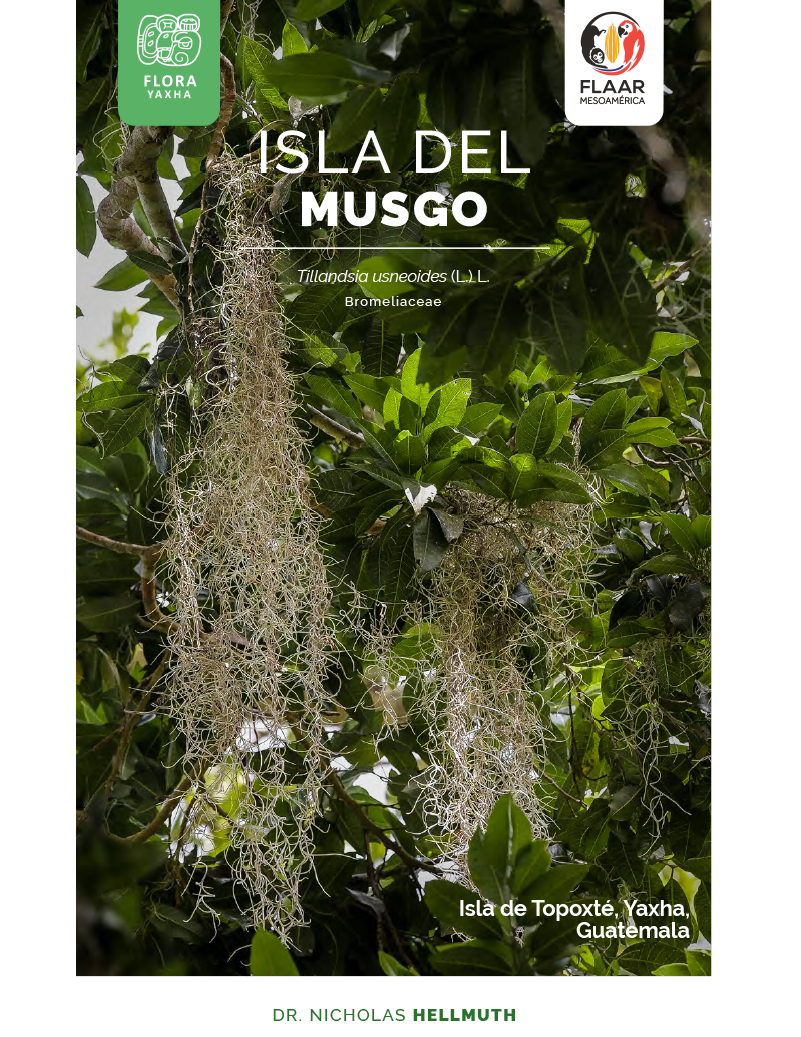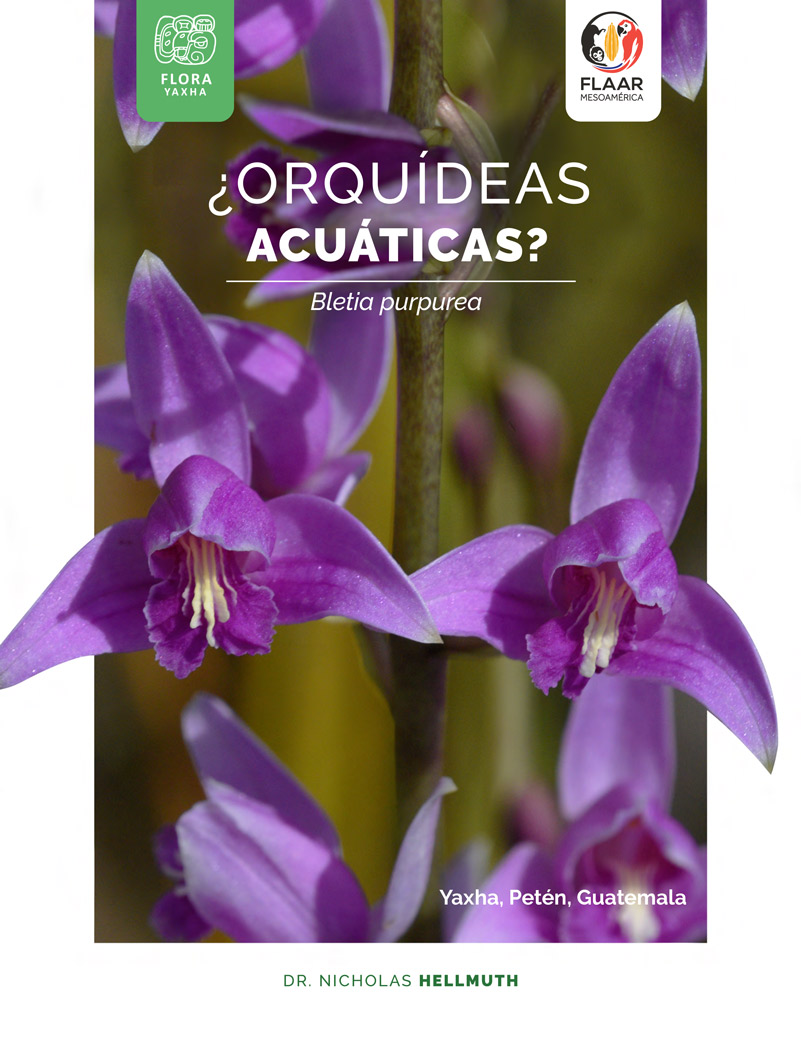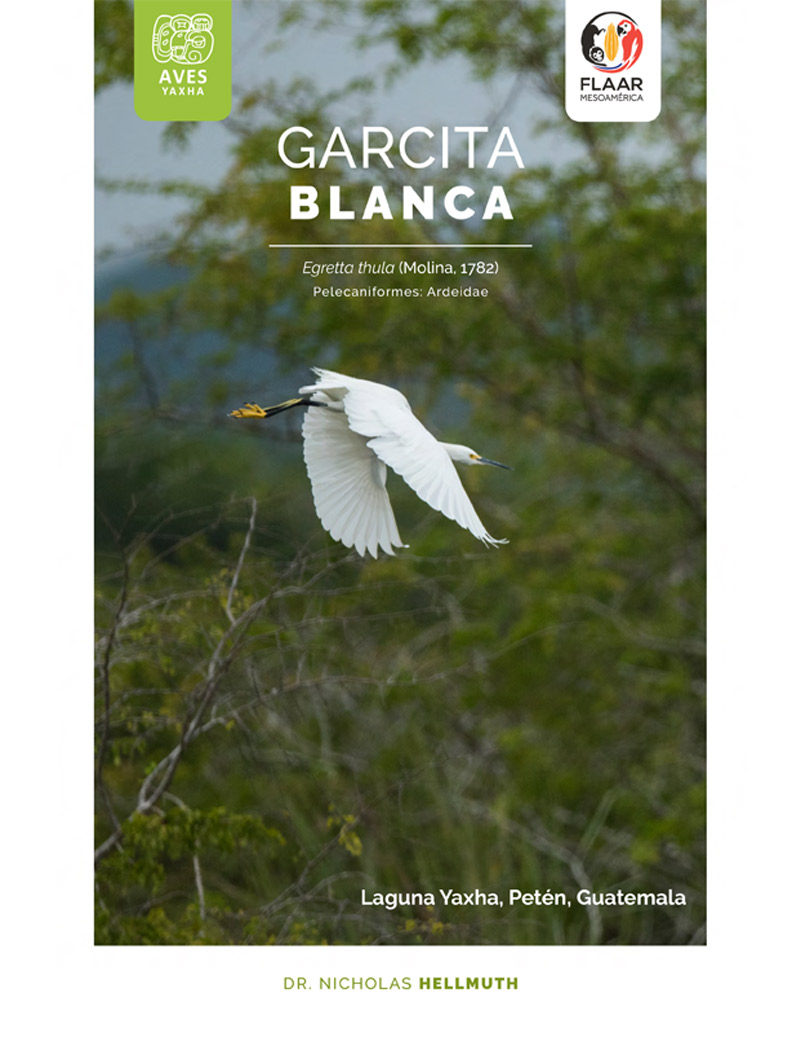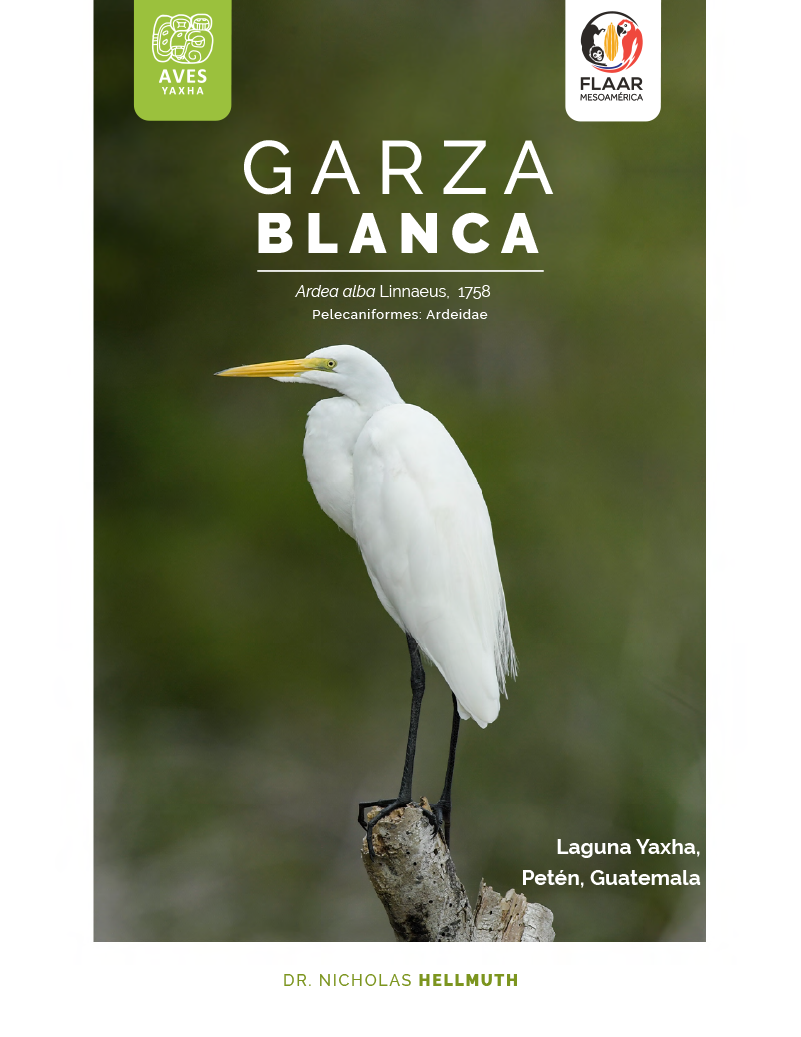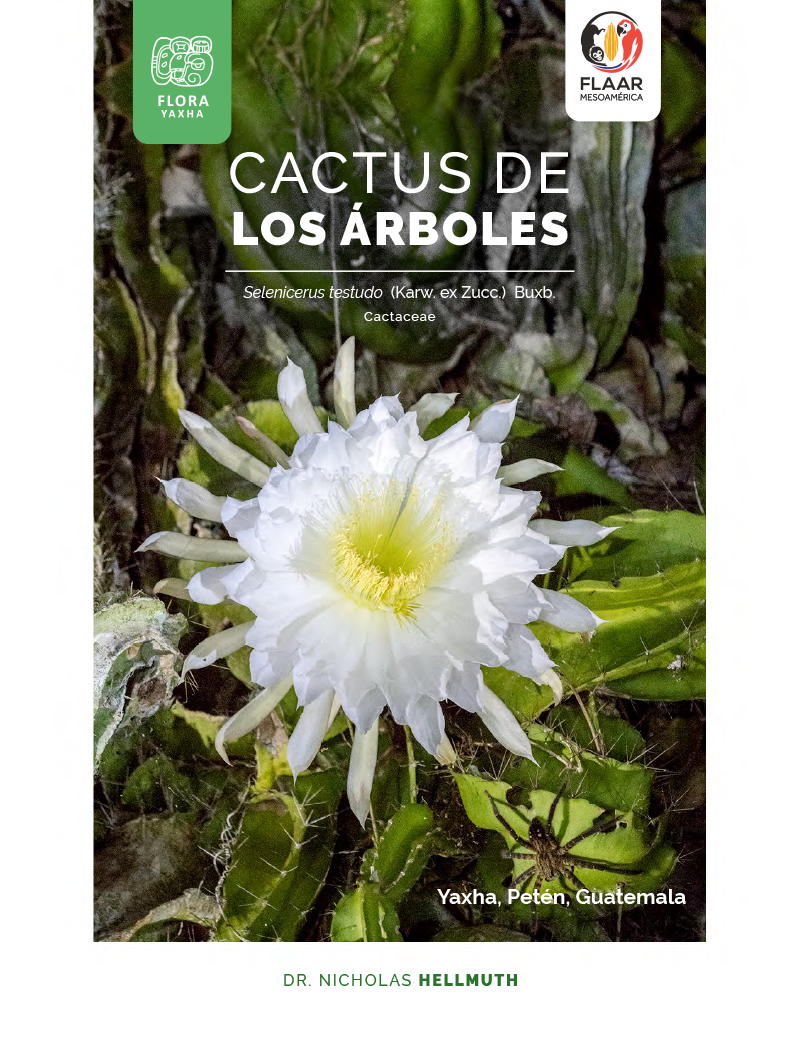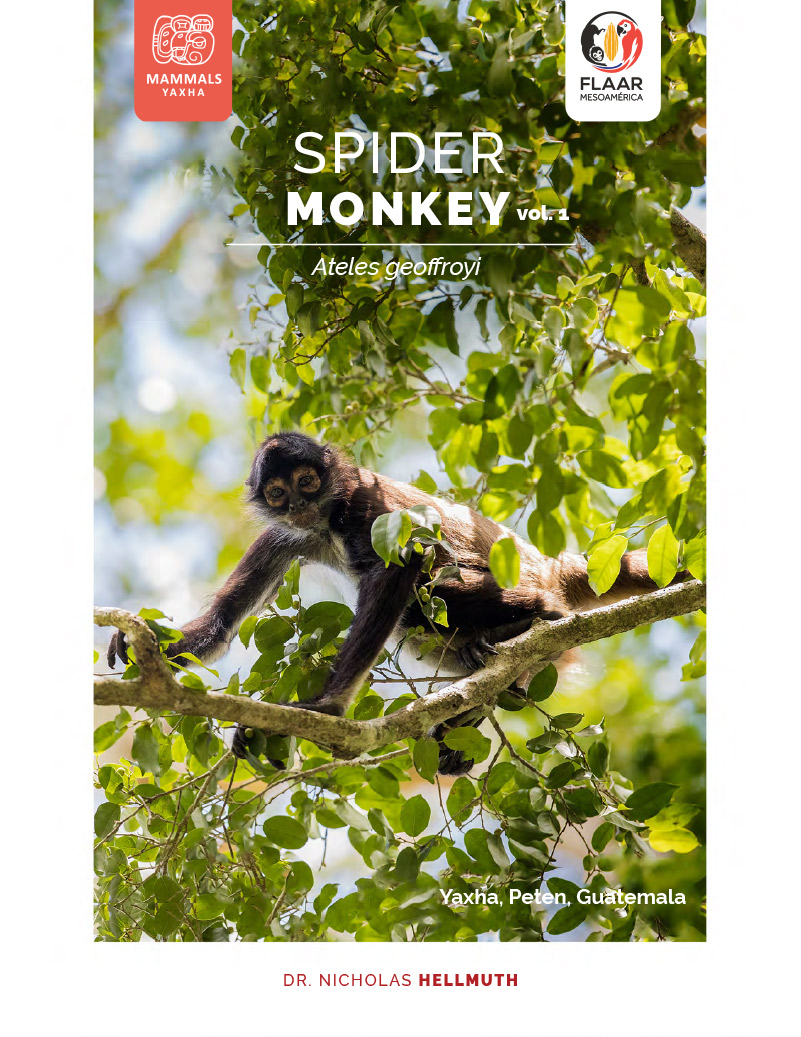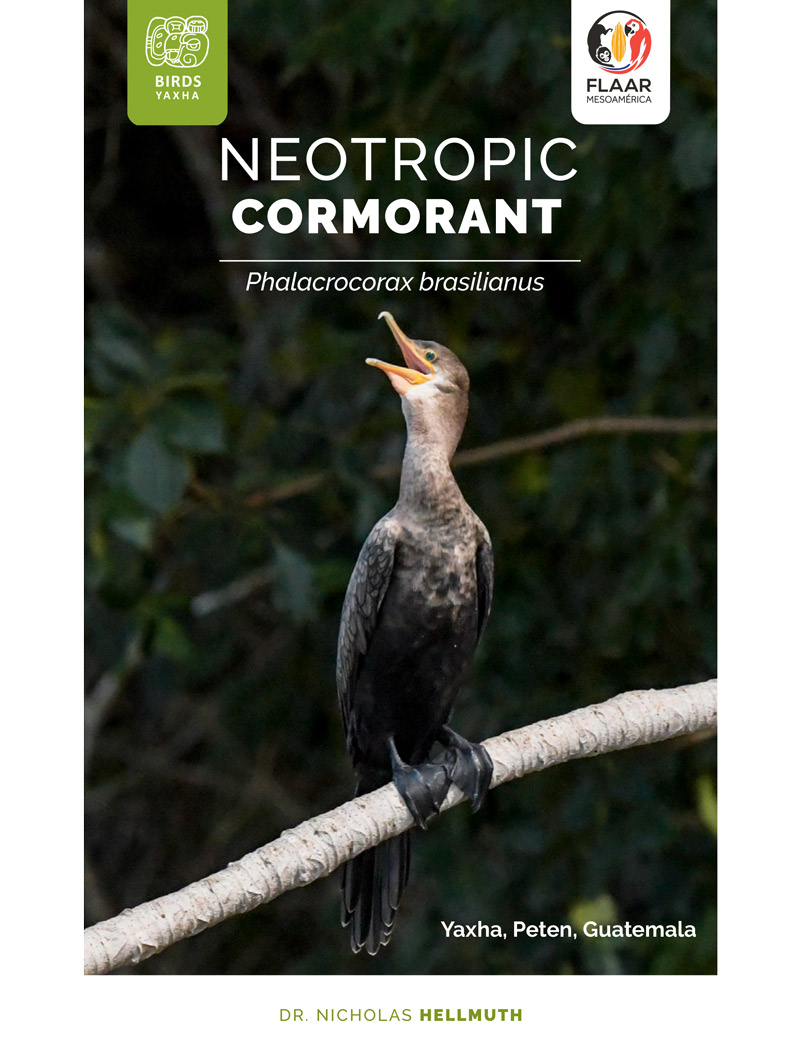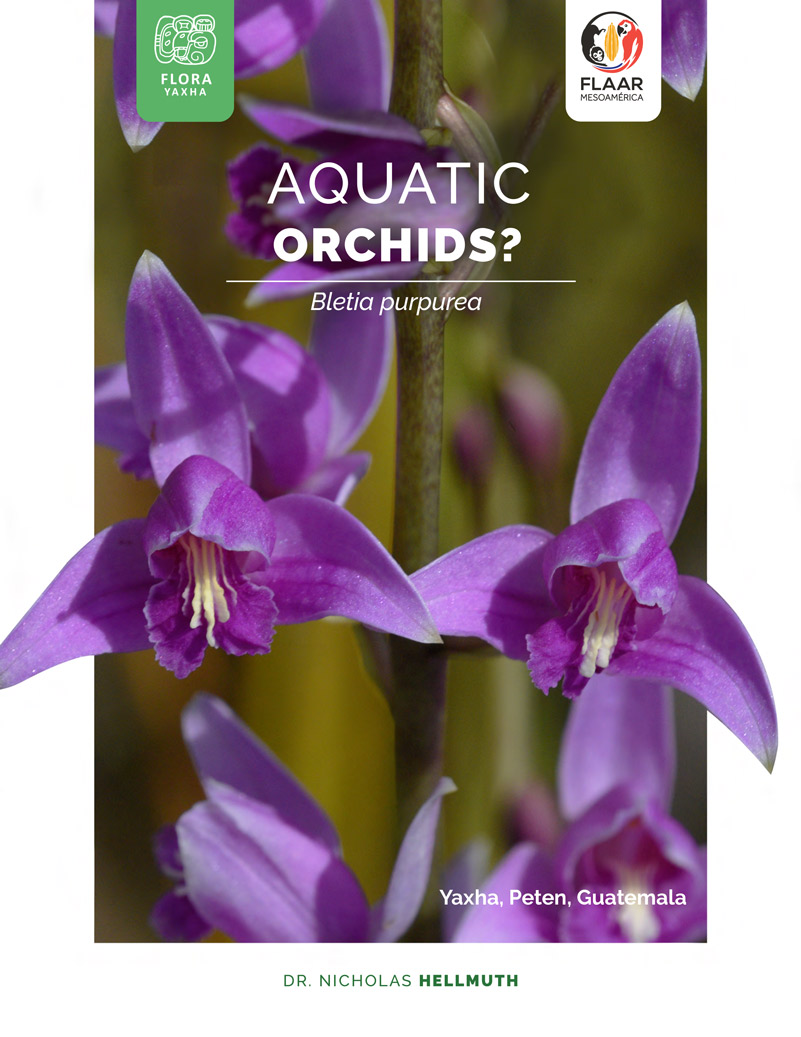H. brasiletto. Road to Zacapa (Jan 12, 2021). Photography by: David Arrivillaga with a Sony-A1 camera.
The Haematoxylum L. genus includes trees and shrubs with conical thorns on the branches, pinnate leaves and inflorescences in racemes, solitary or fasciculate. this genus has only five species worldwide, four in tropical America (H. brasiletto, H. campechianum, H. sousanum and H. calakmulense) and one in Africa (H. dinteri) (Plasencia et al., 2017).
Here we present two species: Haematoxylum campechianum and H. brasiletto. The word Haematoxylum derives from the Greek haima = blood, and xylon = wood, or bloodwood, making reference to its dark-red heartwood (the central, drier and more compact part of the trunk). The species name campechianum refers to its place of origin, the coastal city of Campeche on the Yucatan Peninsula in Mexico (Ortiz and Pina, 2018). And brasiletto, a geographical epithet, alludes to its location in Brazil (Pablo, 2018).
H. brasiletto pollination. Road to Zacapa (Jan 12, 2021). Photography by: David Arrivillaga (Sony-A1).
Description of Haematoxylum campechianum
This species is a fast-growing ornamental tree that grows up to 45 feet high and 5 feet in diameter. Its pinnate leaves contain several pairs of reverse heart-shaped leaflets that vary in color and size. Yellow fragrant 5-petalled flowers with a white corolla appear throughout the year and generate a small fruit of low nutritional value (Ortiz and Pina, 2018). Its heartwood has a deep rich crimson color from where dye is extracted (see Uses).
This species is native to the tropical region of the American continent and is distributed naturally in Guatemala, Belize and the Yucatan Peninsula in Mexico, in the states of Campeche, Yucatan and Quintana Roo (Plasencia et al., 2017). Throughout Central America, the Caribbean islands and northern South America, this species has been introduced and naturalized.
This plant grows on deep clayey soils commonly known as lowlands, in which the flooded lowland forest known as Ak’alche in Mayan terminology develops. It can be found in high semi-evergreen forest, medium semi-deciduous forest, mangroves, or even growing on the banks of rivers (Plasencia et al., 2017).
Taxonomy:
| Order | Fabales |
| Family | Fabaceae (Leguminosae) |
| Genus | Haematoxylum |
| Species | Haematoxylum campechianum |
| Common name | Palo de Campeche, palo de tinte, tinto, logwood, dyewood, éek (mayan), tooso boon che’ (mayan), palo negro |
H. campechianum. Rio Ixtinto, El Sombrero (Feb 14, 2022). Photography by: Edwin Solares (Canon-R5-35mm).
Description of Haematoxylum brasiletto
This plant is a small spiny tree of 2-12 m heigh with a twisted and fluted trunk with a brown grayish bark. Its branches have spines, bipinnate leaves of 5-8 cm lenght with 3 pairs of reverse heart-shaped leaflets. It presents yellow blossoms with five petals, slightly unequal in size and papery seed pods in a gray yellowish color (Tropic Essences, 2010).
Taxonomy:
| Order | Fabales |
| Family | Fabaceae |
| Genus | Haematoxylum |
| Species | Haematoxylum brasiletto |
| Common name | Palo Brasil, Mexican logwood, Brasil, brazilwood |
H. brasiletto. Road to Zacapa (Jan 12, 2021). Photography by: David Arrivillaga (Sony-A1).
Uses of both species
In some studies, logwood is confused by some authors with Brazilwood because they have the same dye qualities (Plasencia et al., 2017). In H. brasiletto the main colorant is brazilin and in H. campechianum the main one is hematoxylin. Through oxidation, brazilin and hematoxylin are converted to the darker red compounds, brazilein and haematein, respectively (Bechtold and Mussak, 2009).
Haematoxylum campechianum
Since pre-Hispanic times, the Mayans used the dye of H. campechianum for their rituals, to paint the threads which the braided their hair, to dye their clothes black, and to paint their bodies and faces (Plasencia et al., 2017). After colonial times new uses were given to this plant including: to age bad wine, to write (mixed together with charcoal and iron salt) and it was known for its tonic and astringent properties to combat dysentery, diarrhea, intestinal parasites, and menstrual disorders (Plasencia et al., 2017; Ortiz and Pina, 2018). Nowadays it is also used for clinical analyses, medical uses, fence posts and coal production (Chable et al., 2019).
The flowers of H. campechianum produce honey. Due to its colorful flowers, this tree is also planted in gardens and houses as an ornament. The wood also has medicinal properties, the infusion obtained when boiled in water is an astringent and its used as a remedy for diarrhea (Niembro, 2020).
Haematoxylum brasiletto
H. brasiletto has a dense orange-red heartwood and is the primary wood used for making violin bows and other small articles of turnery. The wood is also used to make furniture, crafts and construction of rural housing and firewood (Ávila and Rutiaga, 2014). In pre-Hispanic Mexico brazilwood was used to treat diarrhea and topically as a disinfectant for wounds and skin ulcers (Ortiz and Pina, 2018).
Heartwood and bark extractables have different uses. The aqueous extract of the heartwood acts as an effective antibiotic and the alcoholic extract of the bark is an inhibitor of bacteria and yeasts. The methanolic extract of H. brasiletto has been proven to have strong activity against a panel of 12 bacteria. Some of them are described here.
The antimicrobial effect of H. brasiletto has been tested against Escherichia coli and Staphylococcus aureus (Pablo, 2018). The heartwood is also used in traditional medicine to treat kidney disorders, heart and digestive problems, fever, mouth infections, diarrhea, wounds, bleeding, and cancer (Pablo, 2018). Some studies have proven that methanolic extracts of this species have an inhibition activity against Tripanozoma cruzi, the parasite that causes the Chagas disease (Molina et al., 2014). Some other research has shown that H. brasiletto extracts induce antiproliferative activity in human T-cell leukemia (Bello et al., 2021). Also, extracts of this species inhibit the growth of Streptococcus mutans, a microorganism implicated in dental caries (Rosas et al., 2012).
Differences and similarities
| H. campechianum | H. brasiletto |
|---|
| Natural habitat | Riparian lowlands and limestone outcroppings in Central America and Mexico | Semi-arid, western slopes of Mexico and Central America |
| Flowers | Racemose inflorescences usually in the axils of vegetative leaves, each beside a spine; some are terminal.
Fragrant, cream to light yellow flowers, born singly in the axils of small acuminate dark red bracts. Petals and outer stamens initiated bidirectionally, with the lateral primordial arising before the abaxial pair in each whorl. Open flower, actinomorphic corolla, with ten uniform, equal stamens that remain free. |
Short racemes, subtended by a leaf beside a spine, the may also be terminal. Inconspicuous bracts subtend several small yellow-gold flowers. Order of petals and stamens is unidirectional in both whorls, with the abaxial pair initiated before the laterals. Has a fused, gibbous calyx with short lobes, zygomorphic corolla, and the stamen tube held together by hairs. |
| Flower # | 40 flowers per racime | 6 flowers per raceme or fascicle |
| Leaves | Pinnate | Bipinnate |
| Fruits | Samaroid (winged) and contain two or three seeds. | With indurate sepal cups. |
| Dye | Hematoxylin (black and purple dye) | Brazilin (purple dyes) |
| Uses | Ornamental, to produce honey, wood acts as an astringent. | Wood used for making violins, dye is used to treat diarrhea and as a disinfectant for wounds and skin ulcers. |
Source: Niembro, 2020; Ortiz and Pina, 2018; Tucker and Kantz, 1997.
H. campechianum. Rio Ixtinto. El Sombrero (Feb 14, 2021). Photography by: Edwin Solares (Canon-R5-35mm)
References Cited
- 20014
- Componentes químicos de la madera y la corteza de Haematoxylum brasiletto Karsten (Leguminosae). Madera y Bosques, Vol. 20, Num. 2, 6 pages.
Available Online:
www.scielo.org.mx/scielo.php?pid=S1405-
04712014000200013&script=sci_arttext
- 2009
- Handbook of natural colorants. Wiley Series in Renewable Resources. 432 pages.
Preview Available Online:
https://books.google.com.gt/books?id=hBFxuH5uXyIC&dq=
Haematoxylum+campechianum+y+brasiletto+comparison&lr=
&hl=es&source=gbs_navlinks_s
- 2021
- Biological activities of organic fractions from Ficus obtusifolia and Haematoxylum brasiletto. PharmacologyOnLine, Vol. 1, Num. 307, 7 pages.
Available Online:
https://pharmacologyonline.silae.it/files/archives/2021/vol1/
PhOL_2021_1_A038_BelloMartinez.pdf
- 2019
- Distribución, densidad y estructura dasométrica de Haematoxylum campechianum y Haematoxylum calakmulense en Campeche, México. Ecosistemas y Recursos Agropecuarios, Vol. 6, Num. 16, pages: 65-77.
Available Online:
www.scielo.org.mx/scielo.php?script=sci_arttext&pid=S2007
-90282019000100065
- 2014
- Anti-Trypanosoma cruzi activity of 10 medicinal plants used in northeast Mexico. Acta Tropica, Vol. 136. 5 pages.
Preview Available Online:
www.sciencedirect.com/science/article/abs/pii/S0001706X14001296
- 2020
- Haematoxylum campechianum L.
This document includes a botanical description and pictures of the species. It also mentions different other species of plants.
- 2018
- Hematoxylin: Mesoamerica’s Gift to Histopathology. Palo de Campeche (Logwood Tree), Pirates’ Most Desired Treasure, and Irreplaceable Tissue Stain. International Journal of Surgical Pathology, Vol. 00, Num. 0, 11pages.
Preview Available Online:
https://journals.sagepub.com/doi/full/10.1177/1066896918787652
- 2018
- Caracterización del extracto de Haematoxylum brasiletto encapsulado en hidroxiapatita para evaluar su efecto cicatrizante. 60 pages.
Available Online:
https://repositorioinstitucional.buap.mx/handle/20.500.12371/7774?show=full
- 2017
- Distribución histórica de las especies del género Haematoxylum (Leguminosae) en la Península de Yucatán, México, basada en ejemplares de herbario. Acta Botánica Mexicana, Vol. 119, pages: 51-68.
Available Online:
www.redalyc.org/pdf/574/57450391006.pdf
- 2012
- Ethnobotanical survey and antibacterial activity of plants used in the Altiplane region of Mexico for the treatment of oral cavity infections. Journal of Ethnopharmacology, Vol. 141, Num. 3, 6 pages.
https://doi.org/10.1016/j.jep.2012.03.020
Available Online:
www.sciencedirect.com/science/article/abs/pii/S0378874112001808
- 1997
- Comparative floral development and evolution in tribe Caesalpinieae (Leguminosae: Caesalpinioideae). Haematoxylum. American Journal of Botany, Vol. 84, Num. 8, 18 pages.
Available Online:
https://bsapubs.onlinelibrary.wiley.com/doi/abs/10.2307/2446148
- 2010
- Brasiletto (Haematoxylum brasiletto).
Available Online:
www.aft-powders.com/data/files/TropicEssences_
Brasiletto_20100111.pdf
Botanical description and pictures of the bark of H. brasiletto
Suggested Reading on
Haematoxylum campechianum
and H. brasiletto
- 2019
- Sustainable Utilization of Ultrasonic Radiation in Extraction and Dyeing of Wool Fabric Using Logwood (Haematoxylum Campechianum) Extract. TEKSTIL ve KONFEKSIYON, Vol. 29, Num. 2, 6 pages.
Available Online:
https://dergipark.org.tr/en/pub/tekstilvekonfeksiyon/issue/45459/441229
- 2017
- Antiproliferative activity of Haematoxylum brasiletto H. Karst. Pharmacognosy Magazine, Vol. 13, Num. 50, 5 pages.
Available Online:
www.ncbi.nlm.nih.gov/pmc/articles/PMC5538168/
- 2002
- Fourier-transform Raman characterization of brazilwood trees and substitutes. Analyst, Vol, 128, 6 pages.
Available Online:
https://pubs.rsc.org/en/content/articlehtml/2003/an/b209052j
- 2017
- Homoisoflavonoids and Chalcones Isolated from Haematoxylum campechianum L., with Spasmolytic Activity. Molecules, Vol. 22, Num. 1405. 10 pages.
Available Online:
www.mdpi.com/1420-3049/22/9/1405
- 2003
- Haematoxylo brasiletto. 2 pages.
Available Online:
http://hal.cirad.fr/cirad-00429277/document
- 2021
- Dyeing performance and antibacterial properties of air-atmospheric plasma treated polyester fabric using bio-based Haematoxylum campechianum L. dye, without mordants. Sustainable Chemistry and Pharmacy, Vol. 19, Num. 100372. 11 pages.
Available Online:
www.sciencedirect.com/science/article/abs/pii/S2352554120306112
- 2015
- Tikal: Paleoecology of an ancient Maya city. Cambridge University Press. 198 pages.
Available Online:
https://books.google.com.gt/books?hl=es&lr=&id=WGt2BgAAQBAJ&oi=fnd&pg=PA124&dq=Haematoxylum+campechianum+mayan+name&ots=4fHp-GYdte&sig=RJdA4nNJ8K1jUyPJM9Gf0kCaiHc#v=snippet&q=haematoxylum&f=false
- 2000
- British Logwood Extraction from the Mosquitia: The Origin of a Myth. Hispanic American Historical Review, Vol. 80, Num. 1, 24 pages.
Available Online:
https://read.dukeupress.edu/hahr/article-abstract/80/1/113/26458/British-Logwood-Extraction-from-the-Mosquitia-The
- 2011
- Identificación, usos y medición de leguminosas arbóreas forrajeras en ranchos ganaderos del sur del Estado de México. Tropical and subtropical agroecosystems, Vol. 14, Num. 2, 10 pages.
Available Online:
www.scielo.org.mx/scielo.php?script=sci_arttext&pid=S1870-04622011000200032
- 1995
- Colores y colorants de América. Anales del Museo de América, Vol. 3, 16 pages.
- 2021
- Aislamiento e identificación de substancias bioactivas de Haematoxylum brasiletto (Palo de Brasil) contra Trypanosoma cruzi, causante de la enfermedad de Chagas. Universidad Autónoma de Nuevo León. 65 pages.
Available Online:
http://eprints.uanl.mx/22895/1/1080315669.pdf
- s.f.
- Ficha de reproducción de árboles clave para la restauración. Tinto Haematoxylum campechianum L. 4 pages
Available Online:
https://revivemx.org/Recursos/Fichas_propagacion/Ficha
Propagacion_F1_Haematoxylum_campechianum_Tinto_v2.pdf
- 2008
- Antimicrobial compounds isolated from Haematoxylon brasiletto. Journal of Ethnopharmacology, Vol. 119, Num. 1, 5 pages.
Available Online:
www.sciencedirect.com/science/article/abs/pii/S0378874108003073
Suggested webpages with photos and information on Haematoxylum campechianum and H. brasiletto
www.cabi.org/isc/datasheet/26332#toidentity
Description and distribution of Haematoxylum campechianum
www.naturalista.mx/taxa/280512-Haematoxylum-brasiletto
Pictures, distribution, uses and description of Haematoxylum brasiletto
www.gbif.org/es/species/2950907
Pictures and map of distribution for H. brasiletto
https://biodiversidad.gt/portal/taxa/index.php?taxon=13694&clid=1
Records of H. brasiletto in Guatemala
First posted March, 2022.
Written by Maria Jose Toralla, FLAAR Mesoamerica


